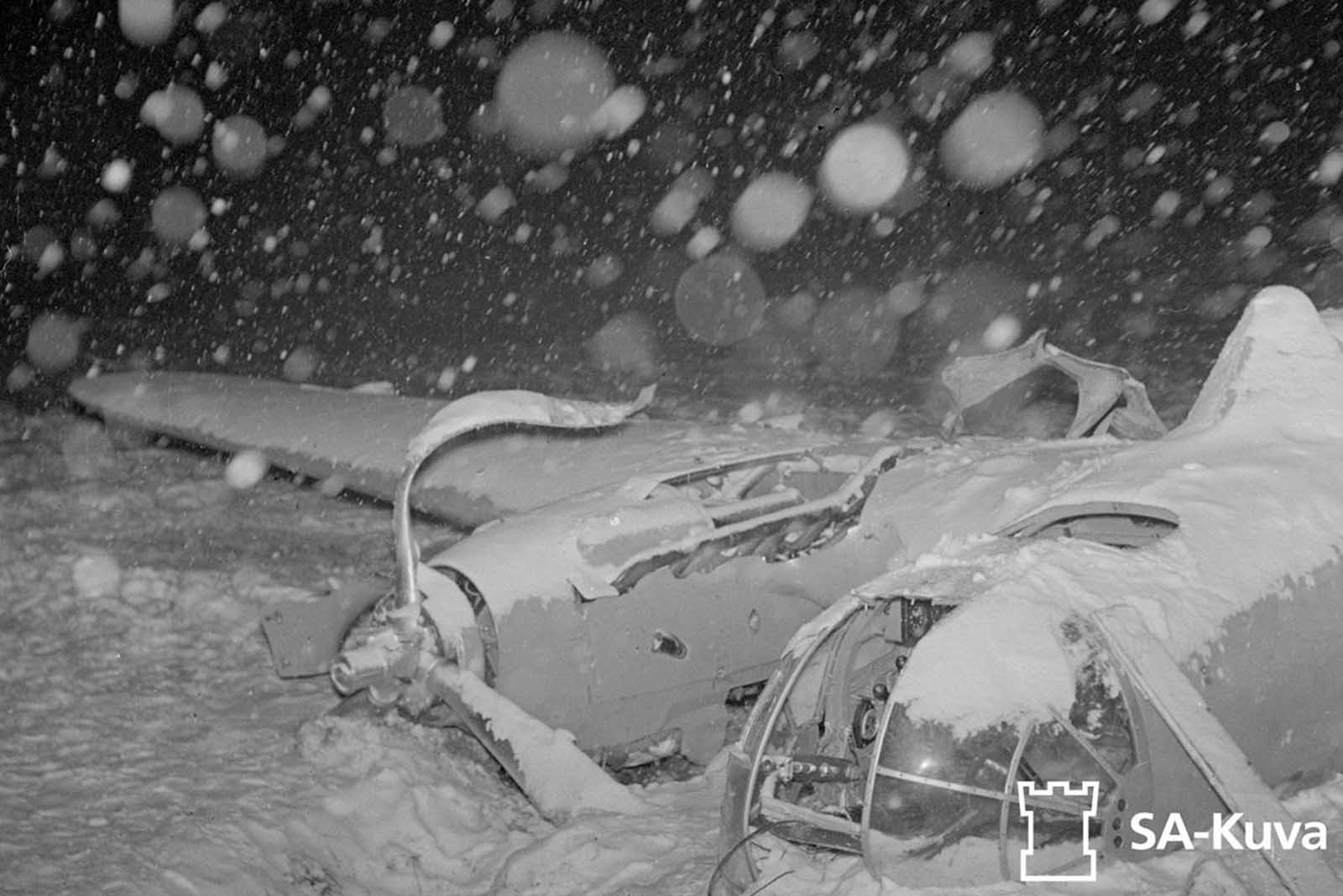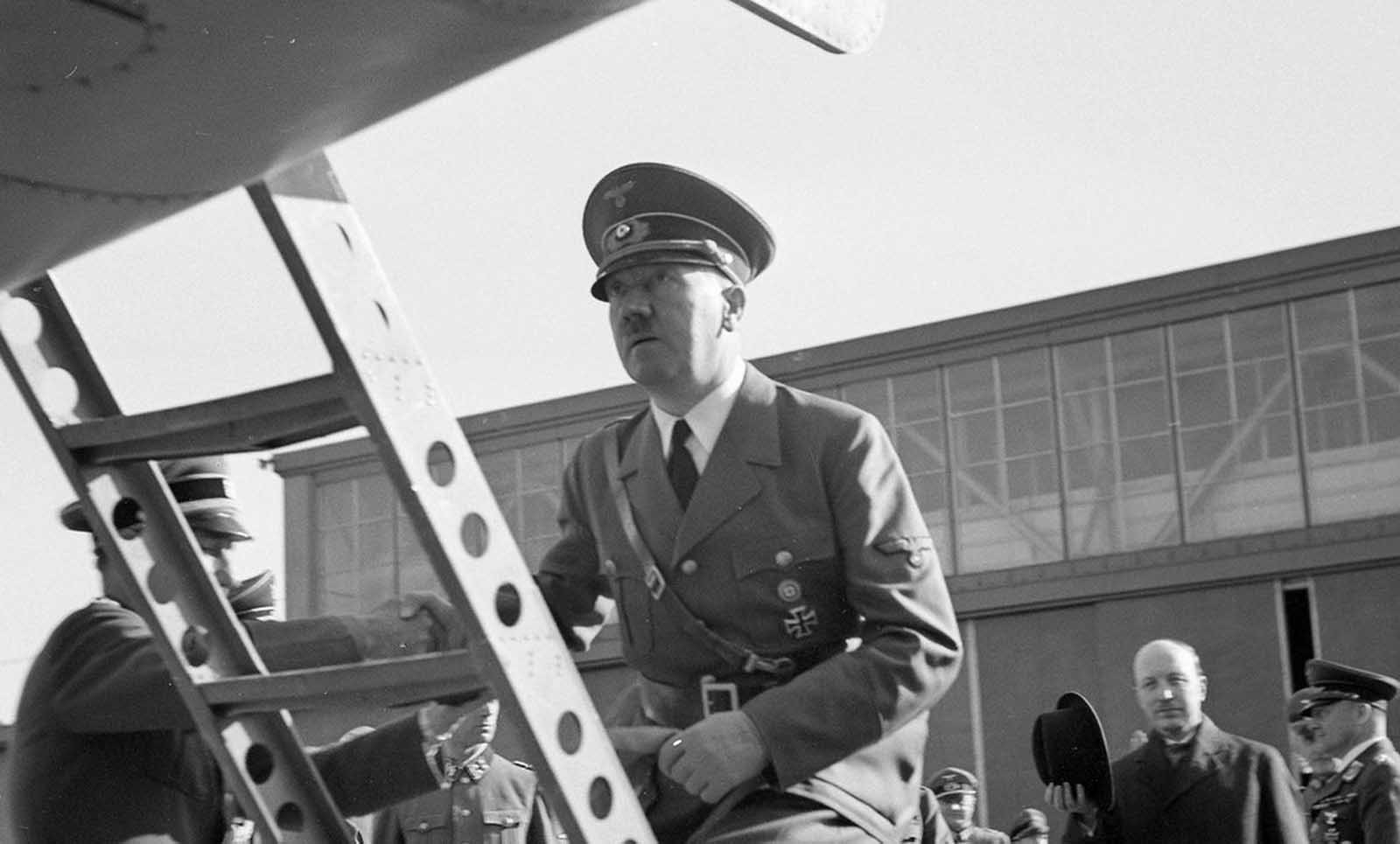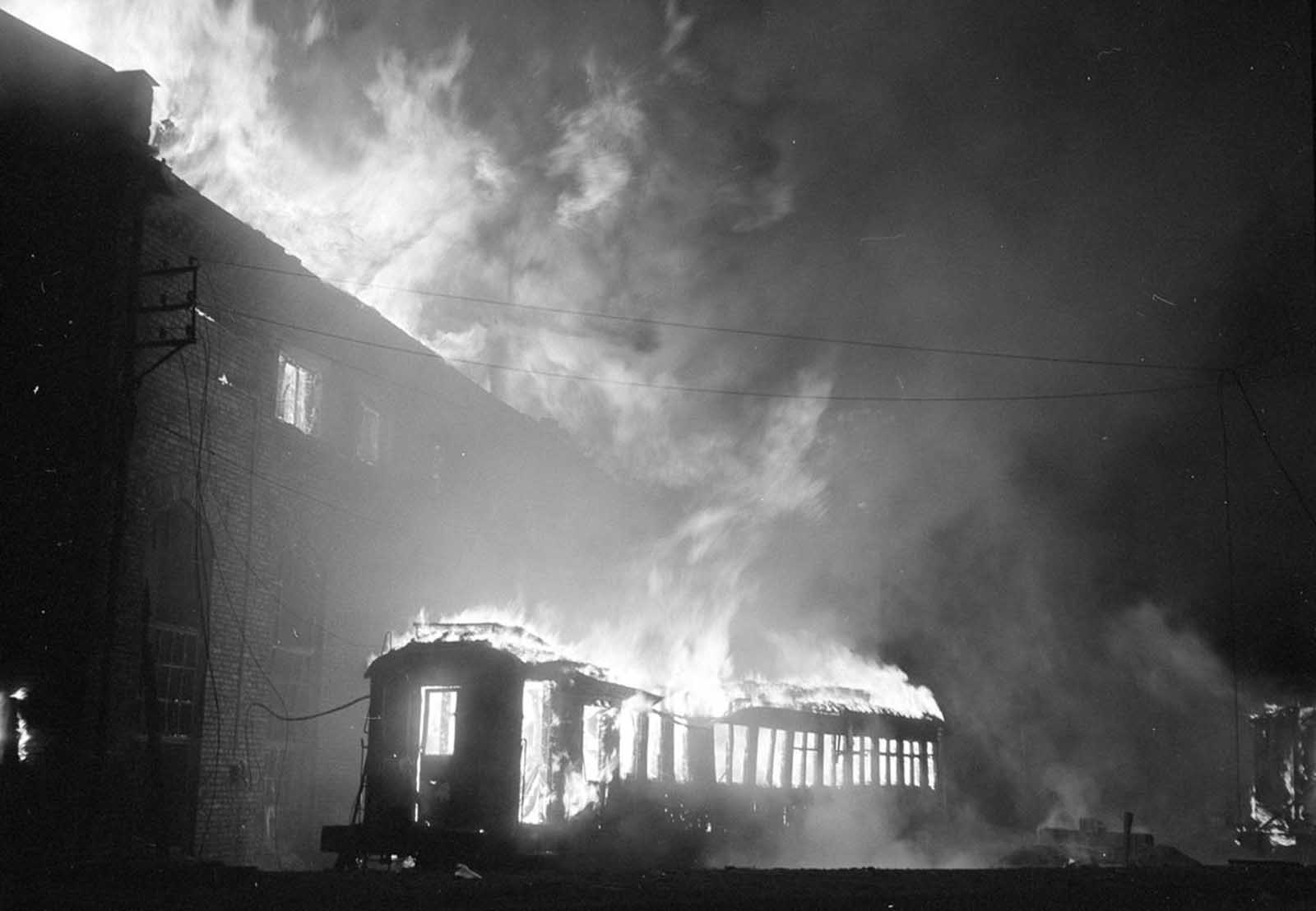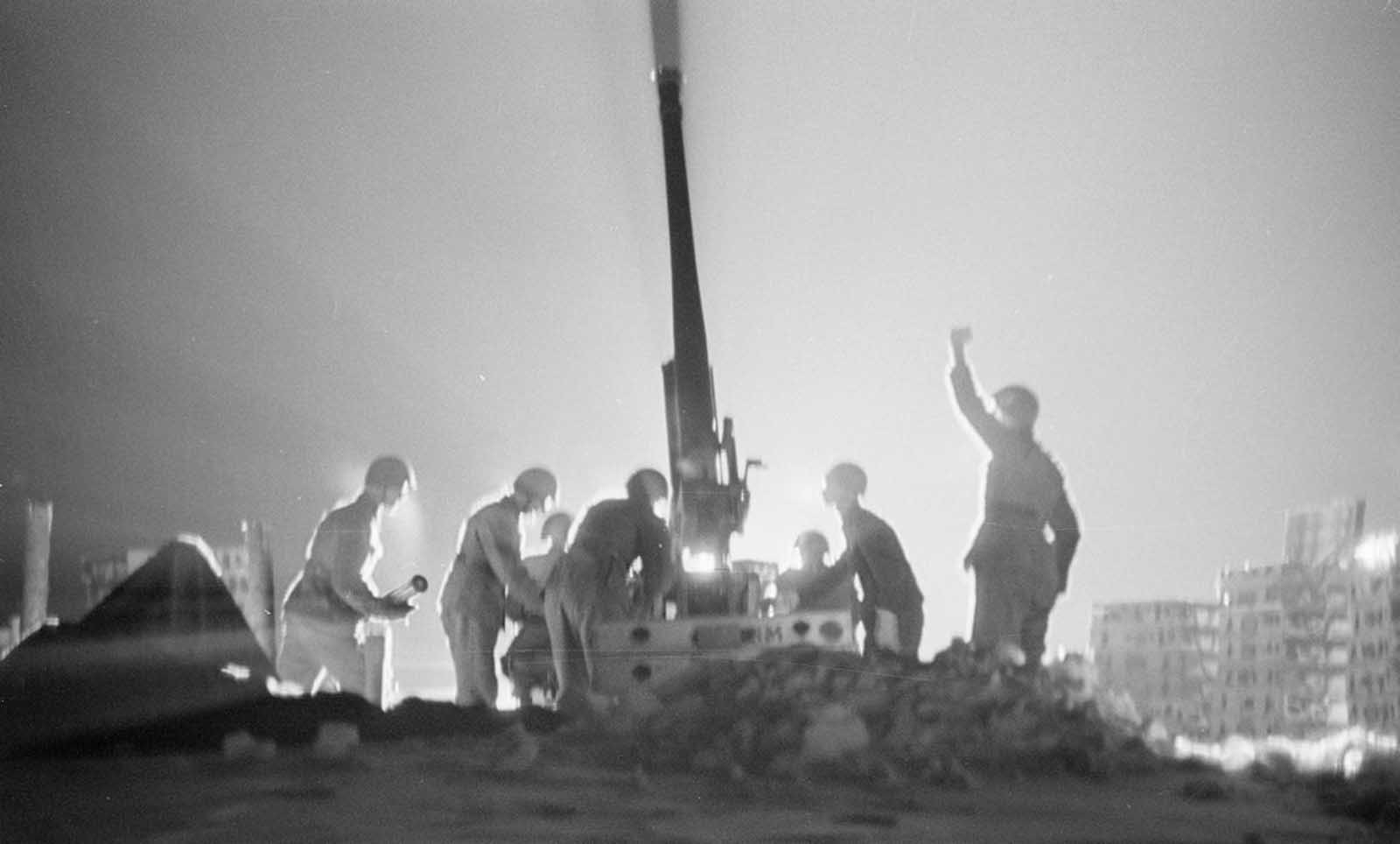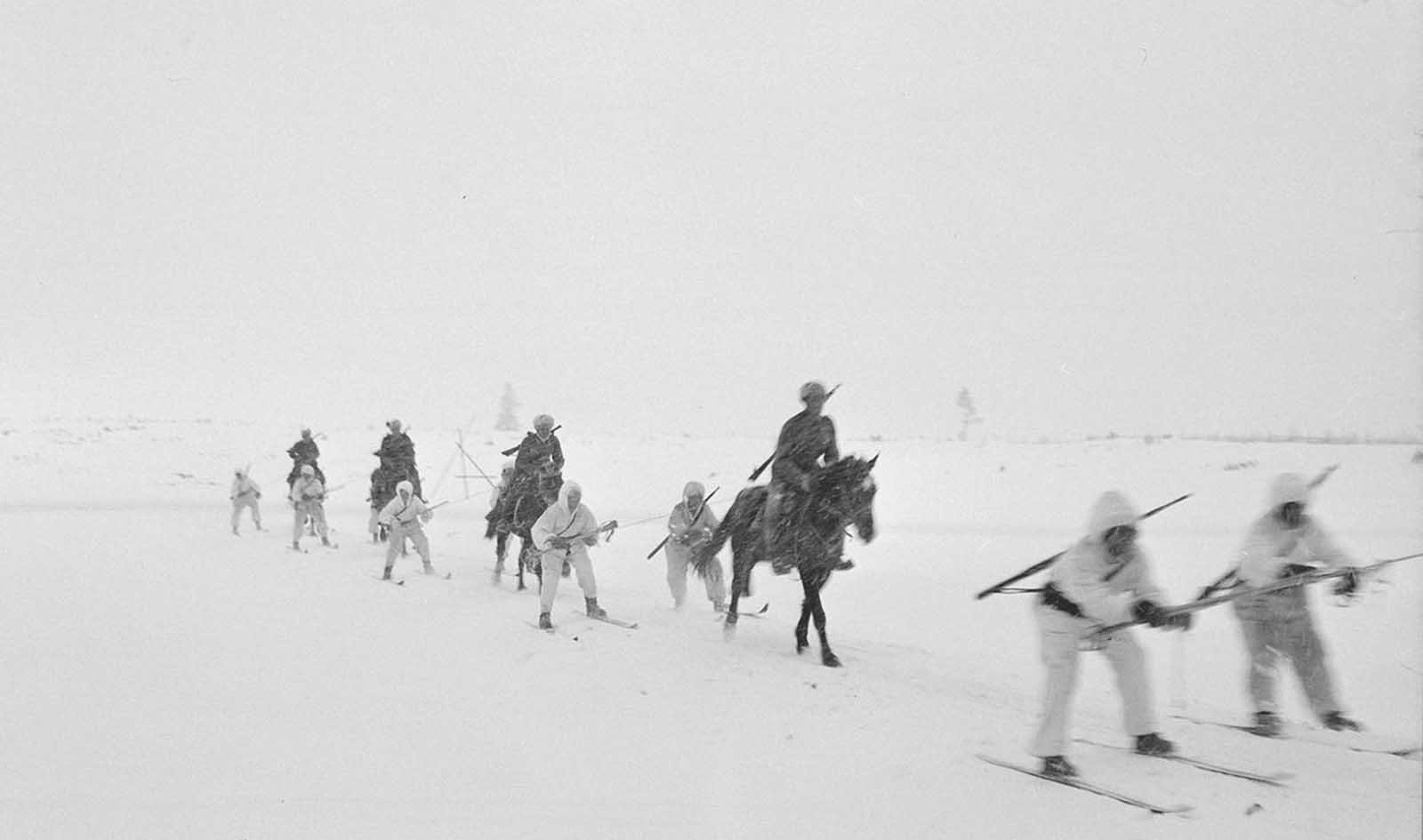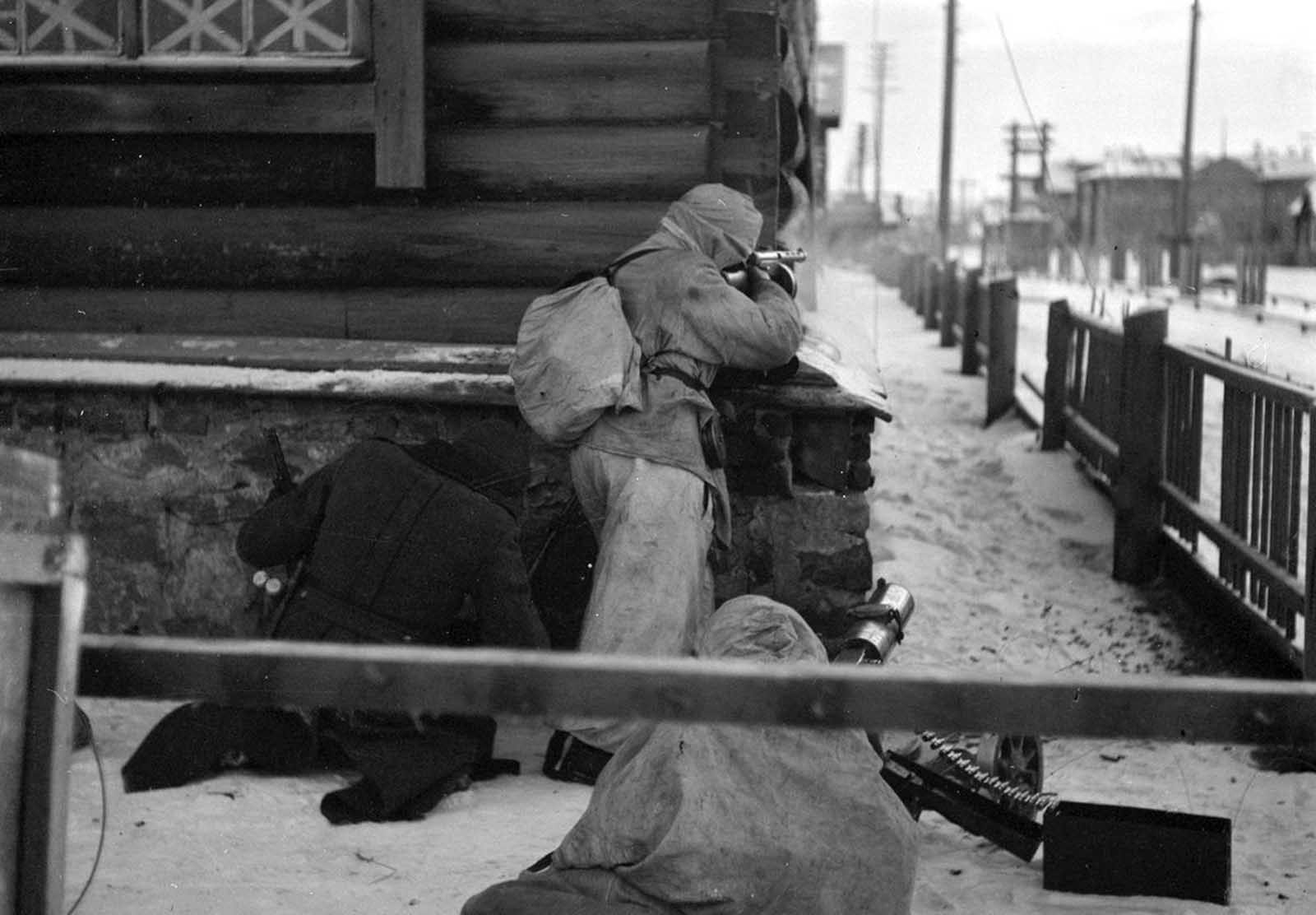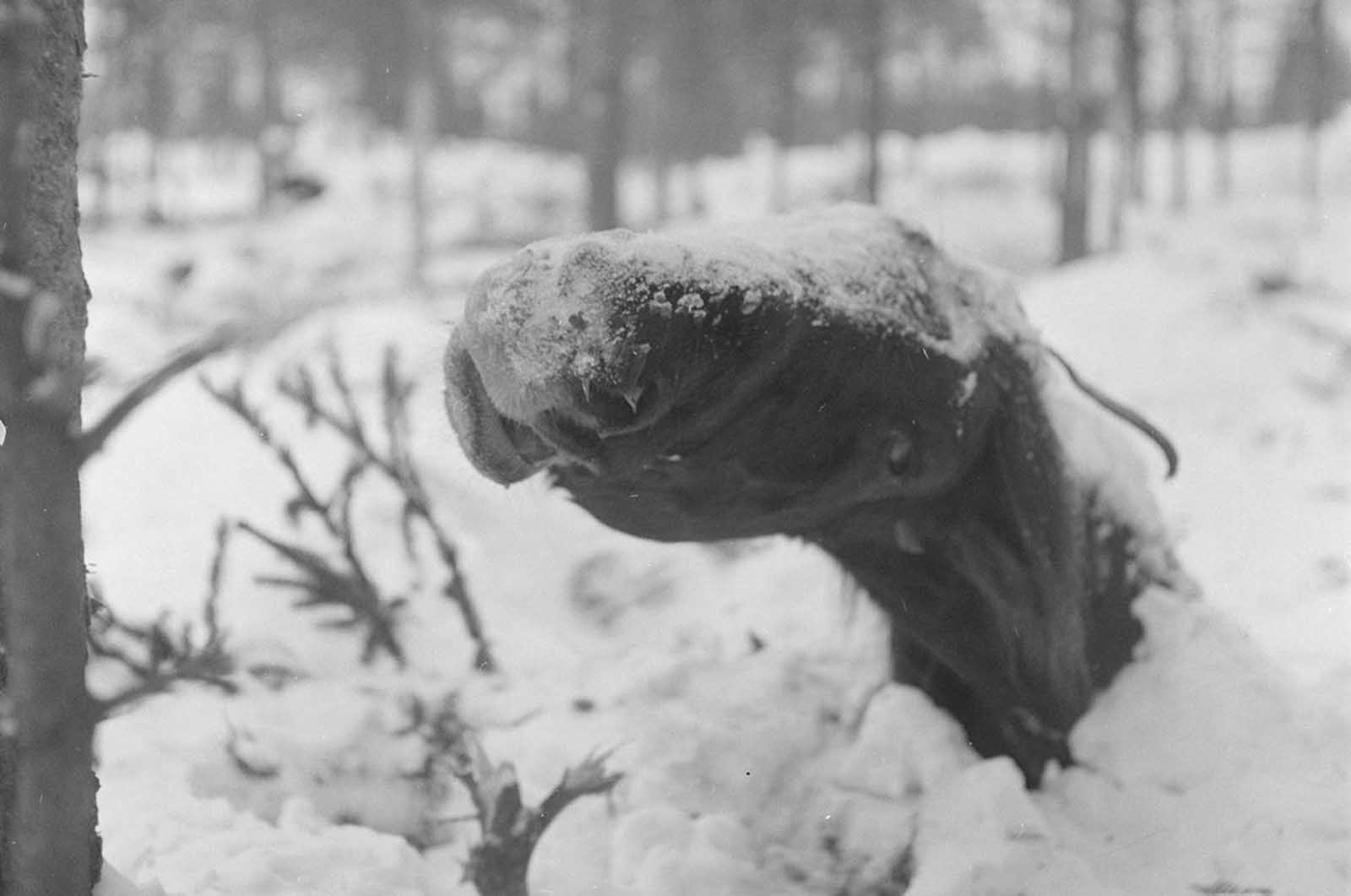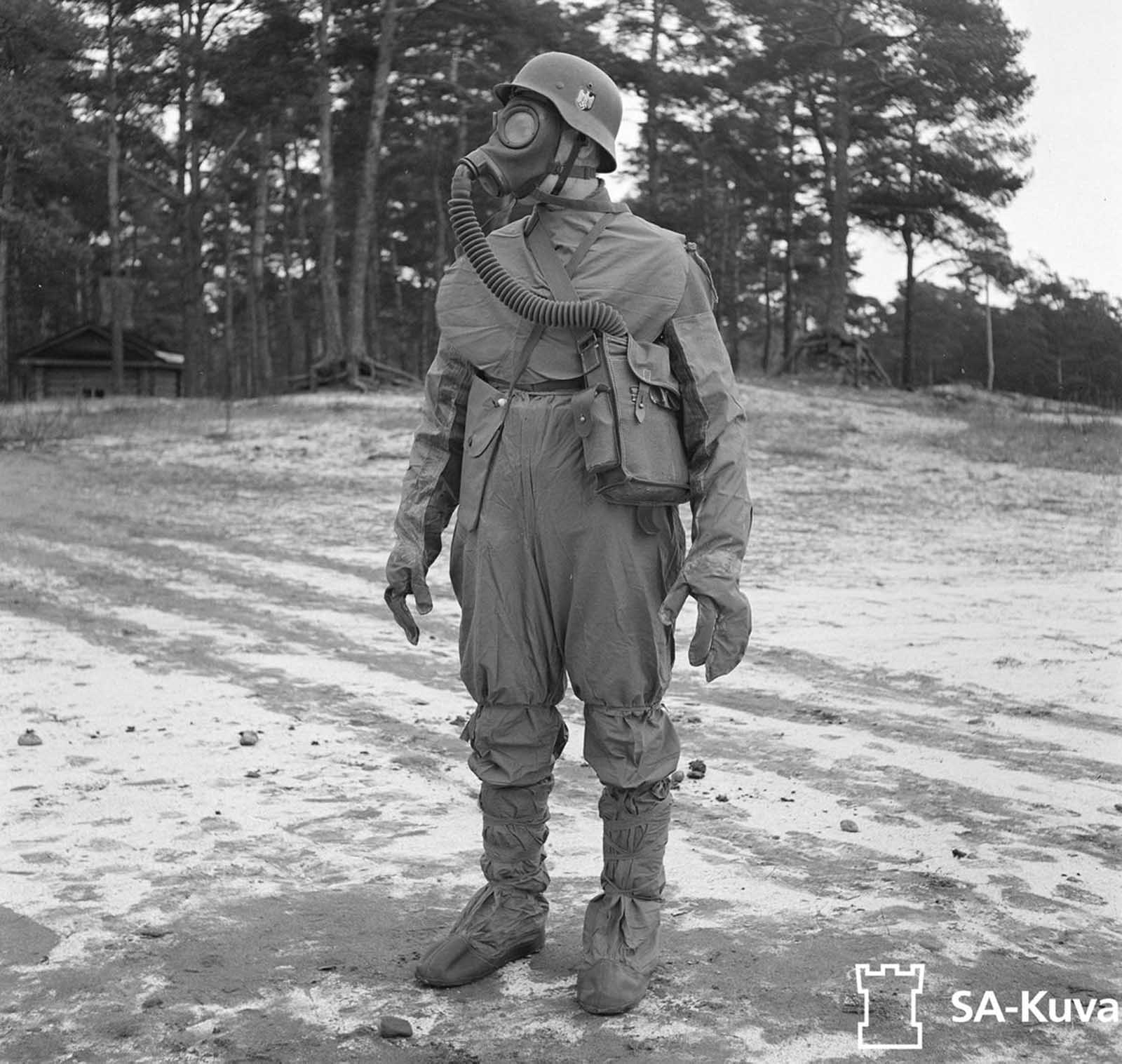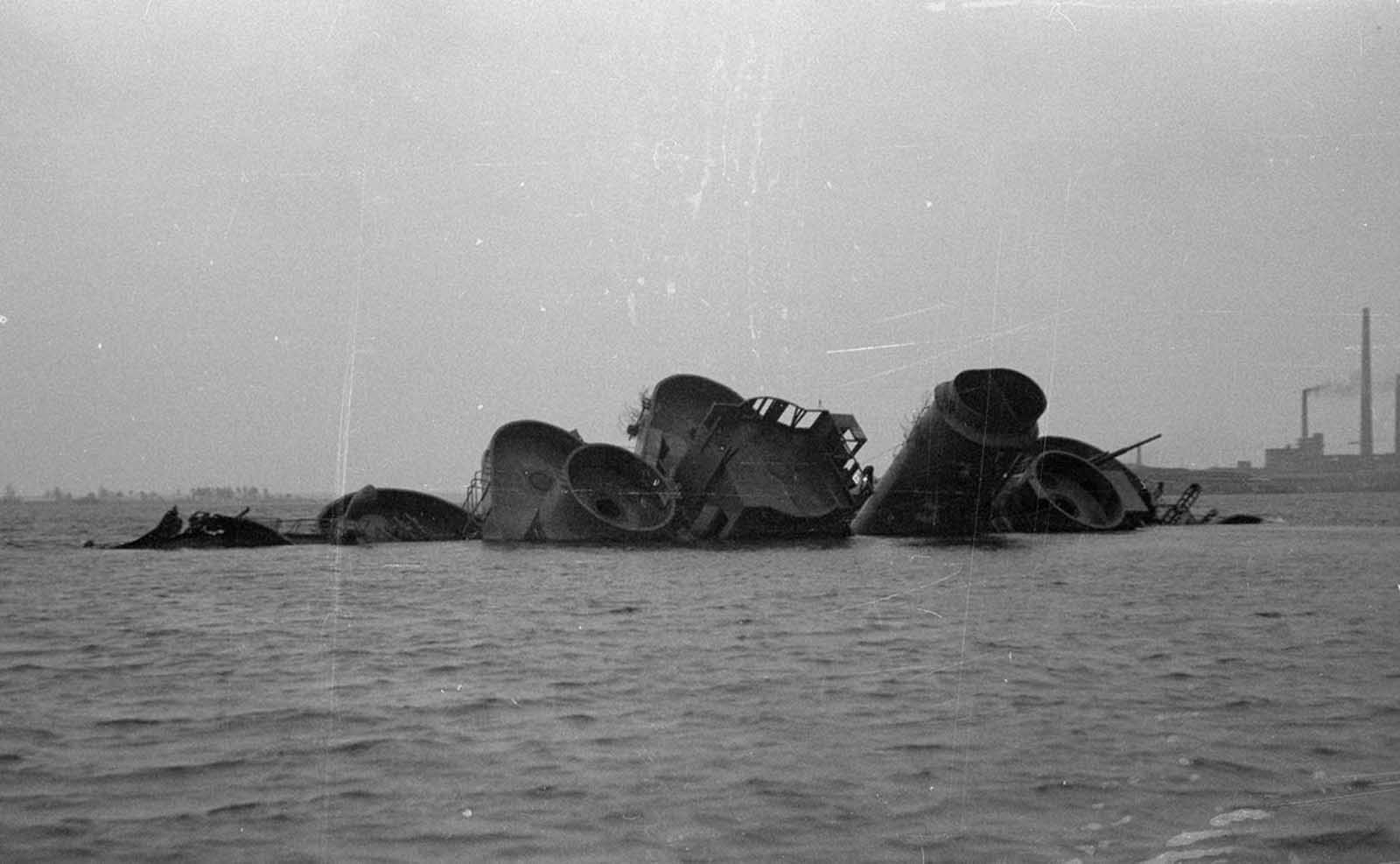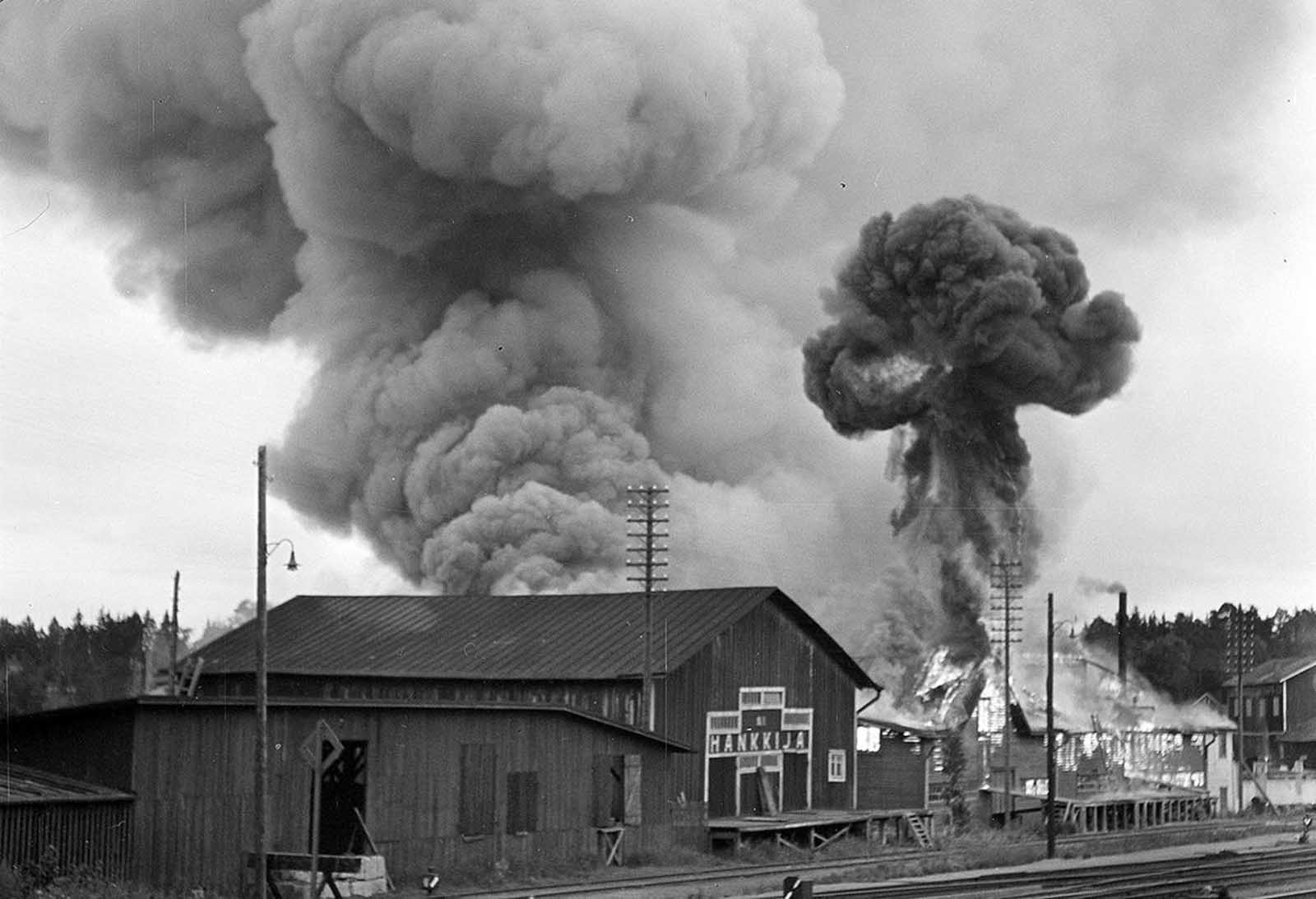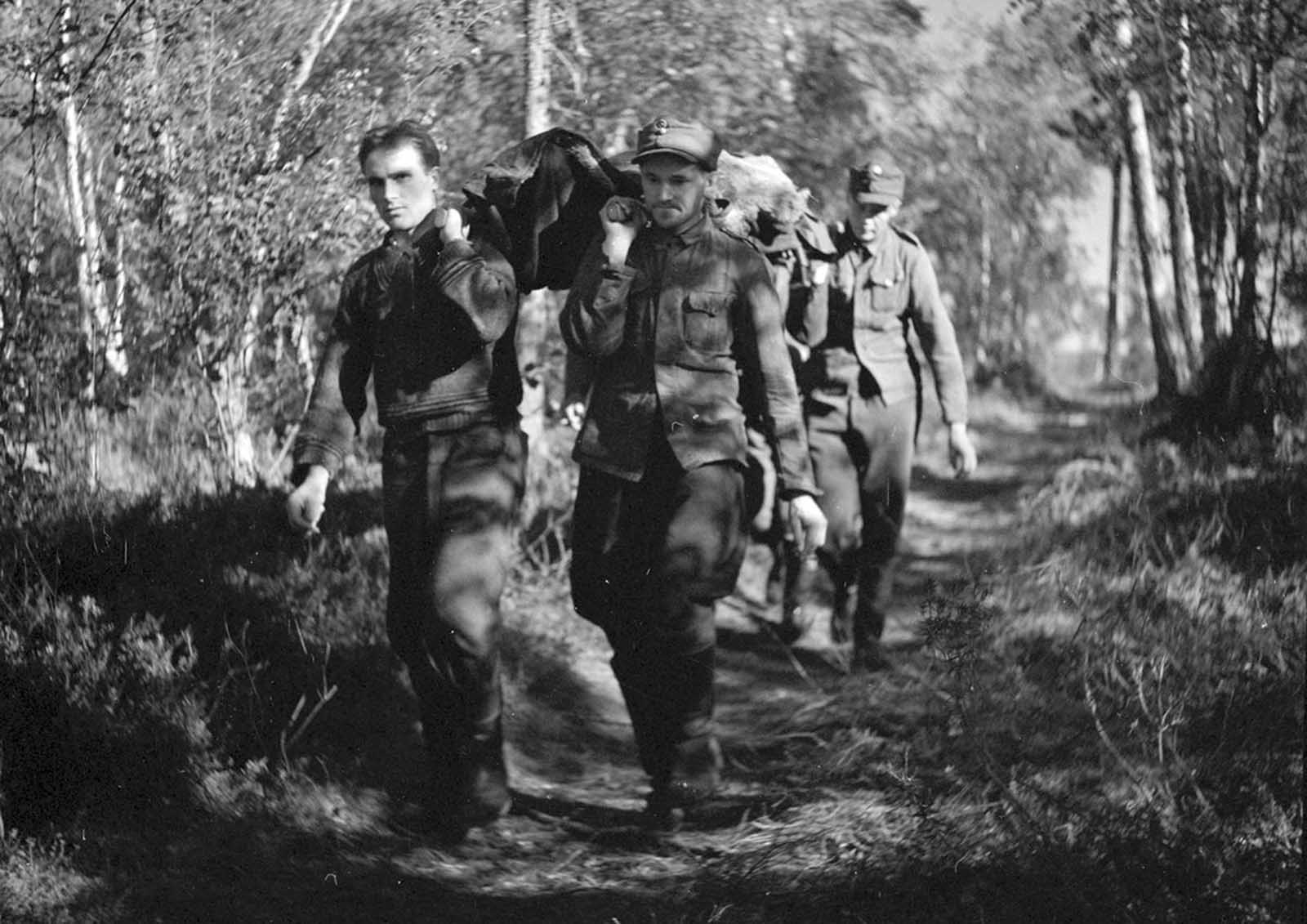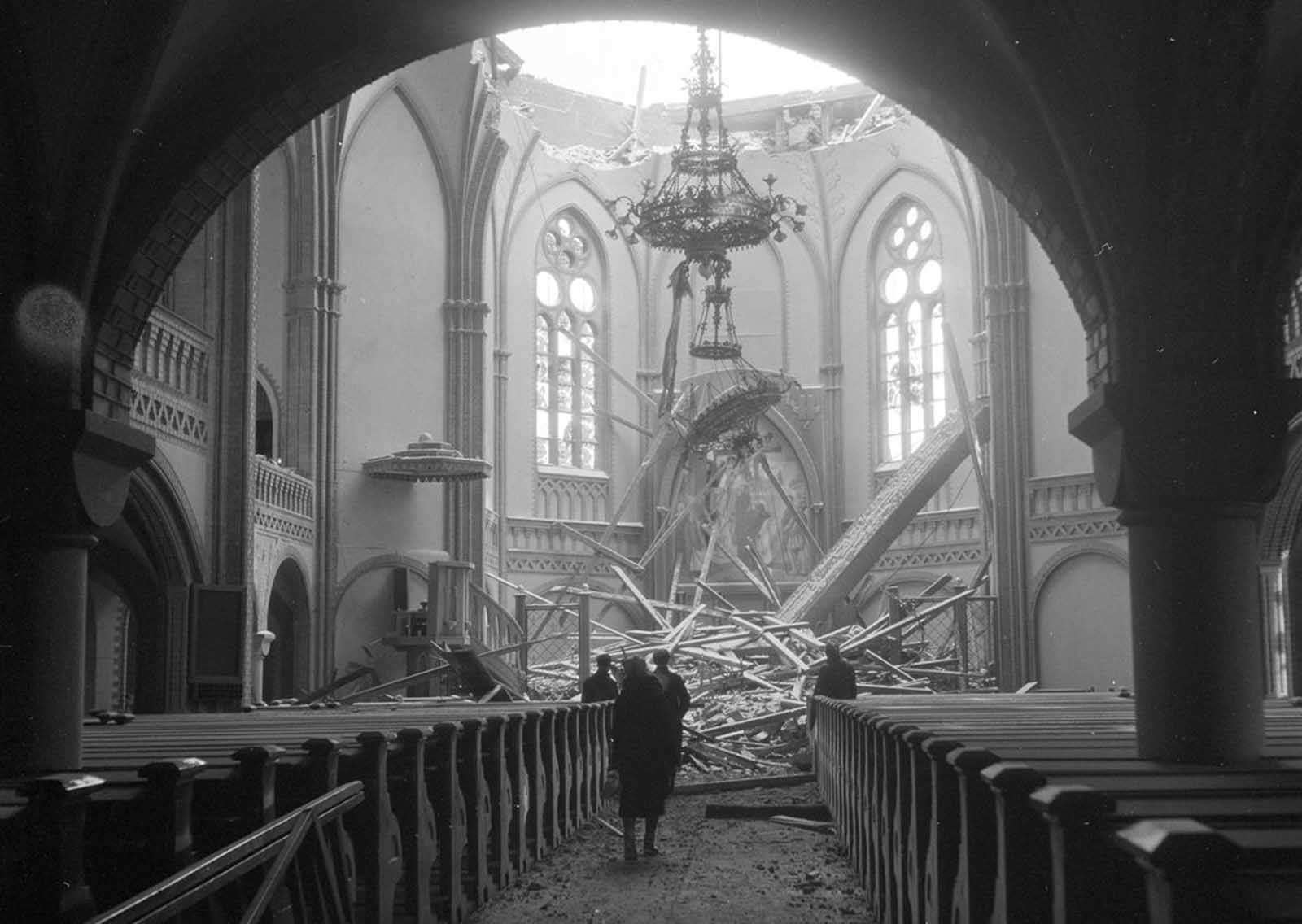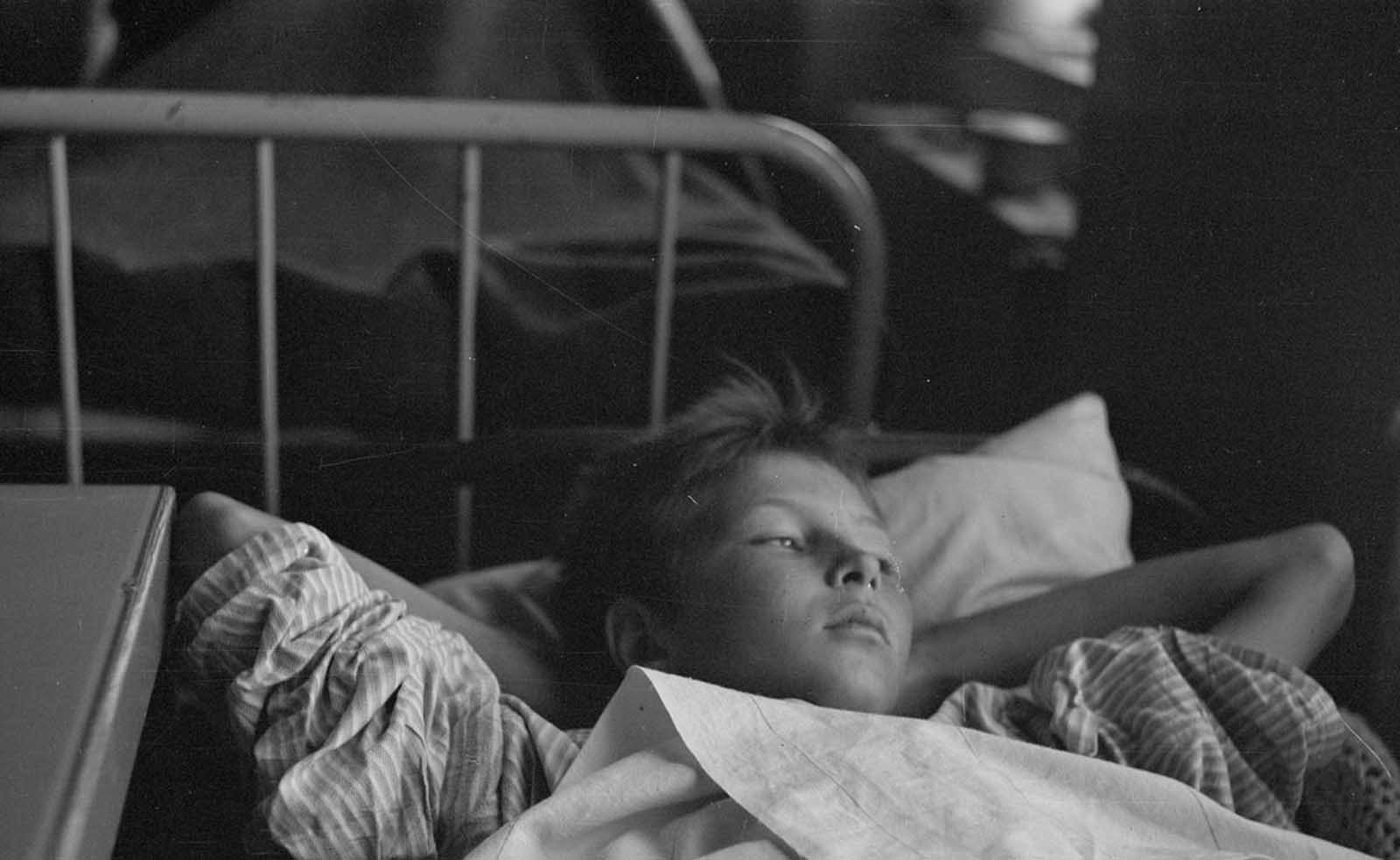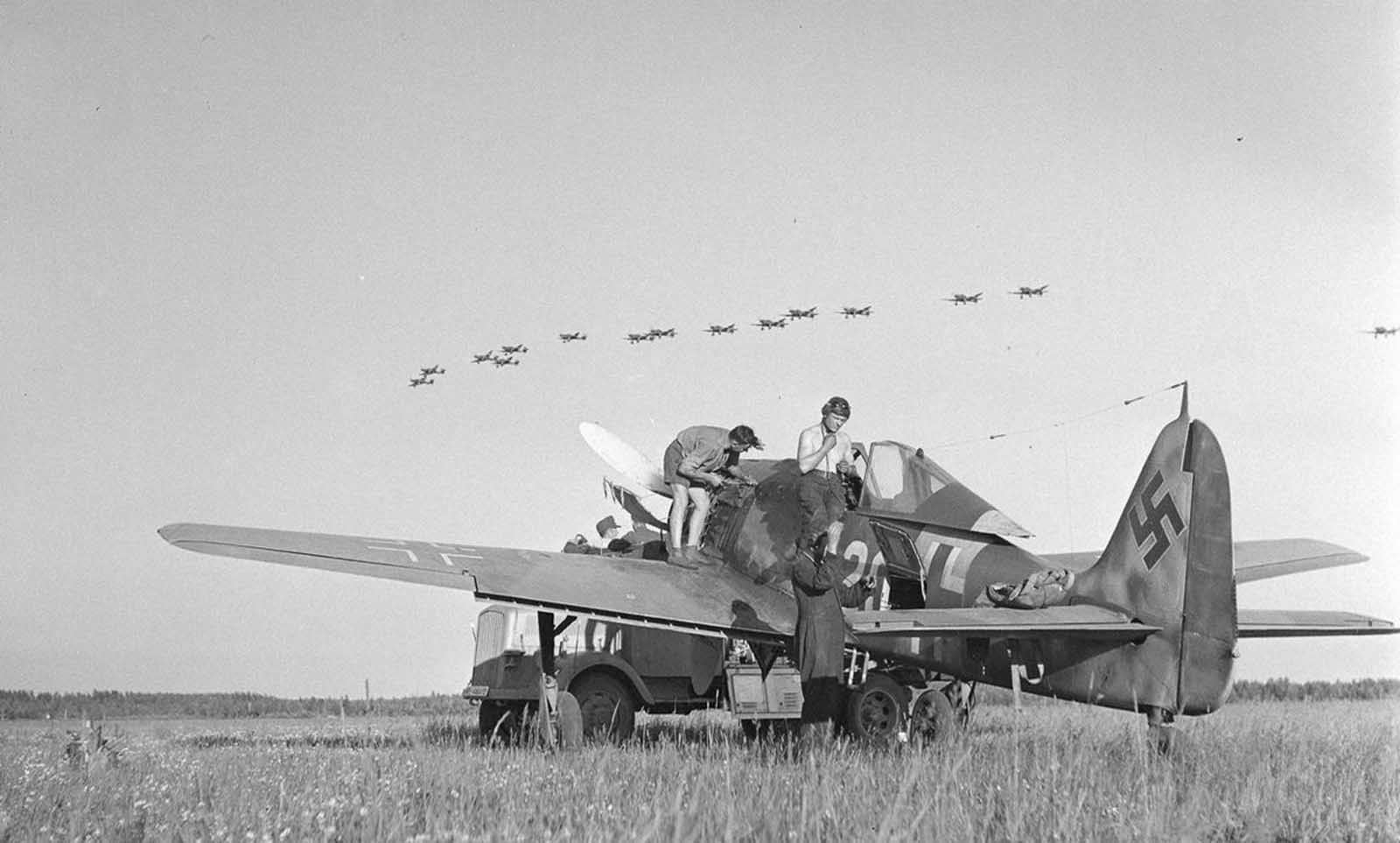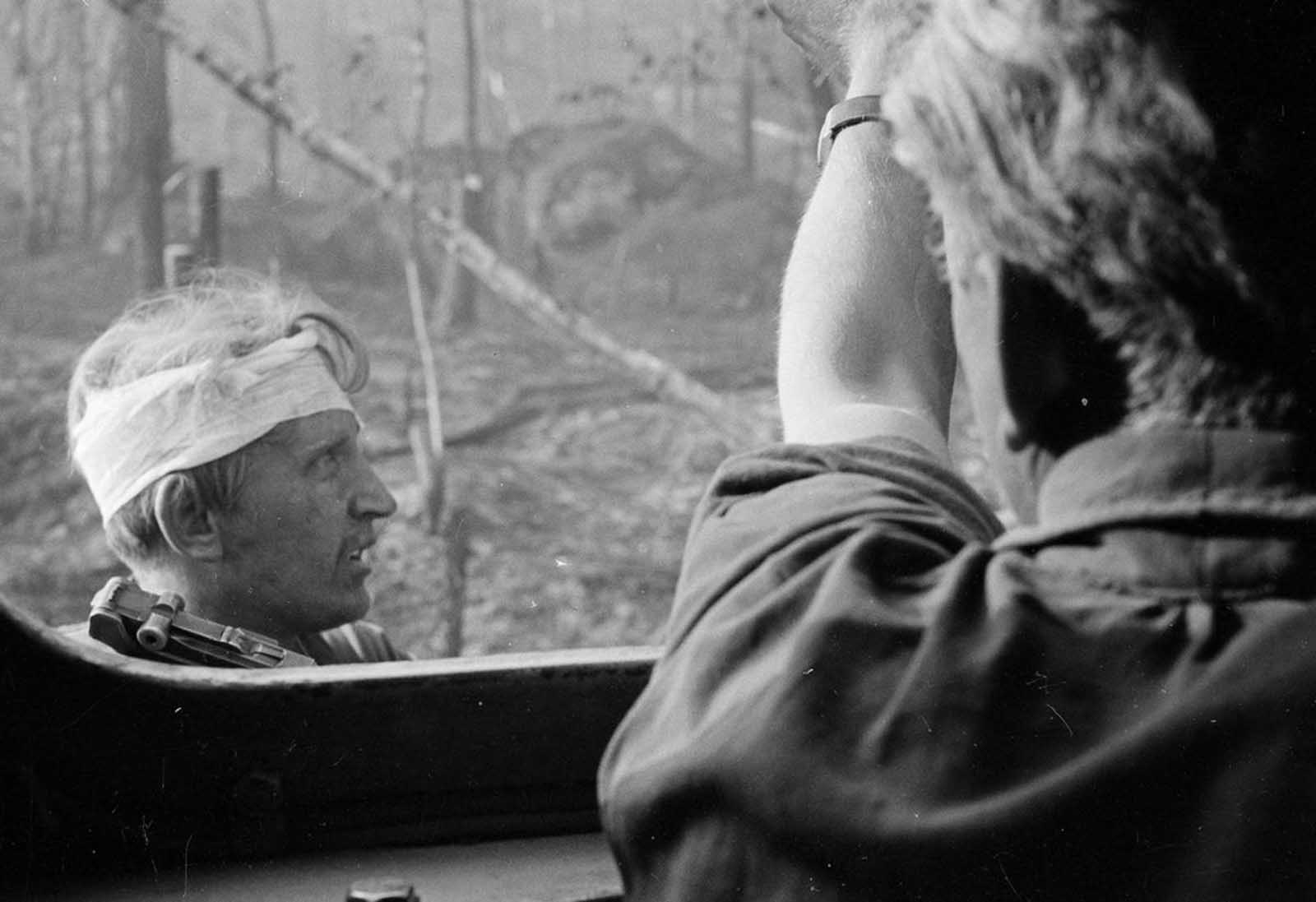Finland’s stand against Soviet aggression aroused the world’s admiration. The Winter War, however, proved to be only a curtain-raiser for Finland’s growing entanglement in World War II. The underlying cause of the Winter War was Soviet concern about Nazi Germany’s expansionism. With a population of only 3.5 million, Finland itself was not a threat to the Soviet Union, but its territory, located strategically near Leningrad, could be used as a base by the Germans. The Soviets initiated negotiations with Finland that ran intermittently from the spring of 1938 to the summer of 1939, but nothing was achieved. Finnish assurances that the country would never allow German violations of its neutrality were not accepted by the Soviets, who asked for more concrete guarantees. In particular, the Soviets sought a base on the northern shore of the Gulf of Finland, from which they could block the Gulf of Finland from hostile naval forces. The Finnish government, however, felt that accepting these terms would only lead to further, increasingly unreasonable, demands. The Nazi-Soviet Non-Aggression Pact of August 1939, by bringing together these former archenemies, revolutionized European politics. The secret protocol of the pact gave the Soviet Union a sphere of influence that included Finland, the Baltic states, and parts of Eastern Europe. When the Germans won a stunningly quick victory over Poland in September 1939, the Soviets hastened to take control in their sphere of influence. In addition to the land taken from Poland in September, the Soviets quickly turned the three Baltic states into quasi-protectorates. Finland followed these events closely; thus, when, on October 5, the Soviets invited Finland to discuss “concrete political questions”, the Finns felt that they were next on the Soviets’ agenda. Finland’s first reaction was to mobilize its field army on October 6, and on October 10 Finland’s reservists were called up in what amounted to a general mobilization. The following day the two countries began negotiations that were to last until November 8. In the negotiations, the main Soviet demand was that the Finns cede small parcels of territory, including a naval base on the Gulf of Finland that the Soviets wanted to help them protect Leningrad. In exchange, the Soviets offered to cede to Finland about 8,800 square kilometers of Karelia along the Finnish border, or about twice the amount of land to be ceded by Finland. Unlike the previous negotiations, these talks were conducted in the public eye, and the Finnish people, like the government, were almost unanimous in rejecting the Soviet proposals. The ostensible reasons for Finland’s refusal were to protect its neutral status and to preserve its territorial integrity. In addition, moving the Finnish border on the Karelian Isthmus away from Leningrad would have given the Soviets possession of much of the line of Finnish fortifications, the loss of which would have weakened Finland’s defenses. Underlying the hardline Finnish negotiating position was a basic mistrust of the Soviets and a feeling that the Soviet offer was merely a first step in subjugating Finland. In this suspicion of an ulterior motive, the Finns were matched by the Soviets, who believed that Finland would willingly assist Germany in a future war. The Finnish government appears to have underestimated the Soviet determination to achieve these national security goals. The two main Finnish negotiators, Vainö Tanner and Juho Paasikivi, vainly urged the Finnish government to make more concessions, because they realized that Finland was completely isolated diplomatically and could expect no support from any quarter if events led to war. General Mannerheim also urged conciliating the Soviets, because Finland by itself could not fight the Soviet Union. When he was ignored, he resigned from the Defense Council and as commander-in-chief, saying that he could no longer be responsible for events. Mannerheim withdrew his resignation when war broke out, however, and served ably as the Finnish military leader. Some historians suggest that the war could have been prevented by timely Finnish concessions. It appears that both sides proceeded from a basic mistrust of the other that was compounded by mutual miscalculations and by the willingness to risk war. The Soviets attacked on November 30, 1939, without a declaration of war. The Soviet preparations for the offensive were not especially thorough, in part because they underestimated the Finnish capabilities for resistance, and in part because they believed that the Finnish workers would welcome the Soviets as liberators. However, almost no Finns supported the Soviet puppet government under the veteran communist Otto Kuusinen. In addition, in one of its last significant acts, the League of Nations expelled the Soviet Union because of its unprovoked aggression against Finland. The task facing the Finnish armed forces, to obstruct a vastly larger enemy along a boundary of about 1,300 kilometers, appeared impossible. Geography aided the Finns, however, because much of the northern area was a virtually impassable wilderness containing a few, easily-blocked roads, and Finland generally presented difficult terrain on which to conduct offensive operations. Thus the Finns were able to use only light covering forces in the north and to concentrate most troops in the crucial southeastern sector, comprising the Karelian Isthmus and the area north of Lake Ladoga, that protected the isthmus from rear assault. The position on the isthmus was strengthened considerably by the Mannerheim Line. An additional Finnish advantage lay in the Finns’ unorthodox military doctrine. They were trained in the use of small, mobile forces to strike at the flanks and the rear of road-bound enemies. By means of the so- call motti tactic (the name is taken from the Finnish word for a cord of firewood), they sought to break invading columns into small segments, which were then destroyed piecemeal. The final advantage of the Finns was their phenomenally high morale; they knew they were fighting for their national survival. Finland’s main disadvantage lay in the glaring, fifty-to-one disparity between its population and that of the Soviet Union. The Finnish hope was to hold out until help could arrive from the West, a forlorn hope as events turned out. Most observers expected an easy Soviet victory. The Soviets simply advanced all along the front with overwhelming forces, apparently intending to occupy all of Finland. Thanks to the foresight the Soviets had shown in previous years by constructing bases and railroads near the Finnish border, they were able to commit much larger forces than the Finns had anticipated. The main Soviet assault on the Mannerheim Line was stopped, though, in December 1939. Farther north along the line, the Finns were able to employ their motti tactics with surprising effectiveness. At the most famous of these engagements, the Battle of Suomussalmi, two Soviet divisions were virtually annihilated. By the end of December 1939, the Finns had dealt the Soviets a series of humiliating defeats. For a few weeks, the popular imagination of the outside world was captured by the exploits of the white-clad Finnish ski troops gliding ghostlike through the dark winter forests, and in general by the brave resistance of the “land of heroes”. The Soviet invasion brought the Finns together as never before. In an act that only a few years before would have been unthinkable, on Christmas Eve in December 1939, middle-class Finns placed lighted candles on the graves of Finnish Red Guards who had died in the civil war. The magnificent courage displayed by Finnish soldiers of all political persuasions during the Winter War of 1939-40 led Mannerheim to declare afterward that May 16 would no longer be celebrated, but that another day would be chosen to commemorate “those on both sides who gave their lives on behalf of their political convictions during the period of crisis in 1918”. The defeats and the humiliations suffered by the Soviet Union made it even more determined to win the struggle. The military command was reorganized, and it was placed under General S. K. Timoshenko. The Soviets made intensive preparations for a new offensive, assembling masses of tanks, artillery, and first-class troops. On February 1, 1940, the Soviet offensive began, and this time it was confined to the Karelian Isthmus. Soviet tactics were simple: powerful artillery bombardments were followed by repeated frontal assaults, using masses of tanks and infantry. The Finnish defenders were worn down by the continual attacks, the artillery, and the aerial bombardments, the cold, and the lack of relief and of replacements. On February 11, 1940, the Soviets achieved a breakthrough in the Mannerheim Line that led to a series of Finnish retreats. By early March, the Finnish army was on the verge of total collapse. Finland was saved only by agreeing quickly to Soviet terms, which were encompassed in the Peace of Moscow, signed on March 13, 1940. By the terms of the Peace of Moscow, Finland ceded substantial territories: land along the southeastern border approximately to the line drawn by the Peace of Uusikaupunki in 1721, including Finland’s second-largest city, Viipuri; the islands in the Gulf of Finland that were the object of the negotiations in 1938-39; land in the Salla sector in northeastern Finland (near the Murmansk Railroad); Finland’s share of the Rybachiy Peninsula in the Petsamo area; and the naval base at Hanko on the Gulf of Finland, which was leased for thirty years. The ceded territories contained about one-eighth of Finland’s population; virtually all of the inhabitants moved over to Finnish territory, thereby losing their homes and livelihoods. Finland’s losses in the war were about 25,000 dead, 10,000 permanently disabled, and another 35,000 wounded, out of a population of only 3.5 million. Estimates of Soviet losses vary greatly. A subsequent Soviet leader, Nikita Khrushchev, estimated in his memoirs that the Soviet losses were about one million men. In addition, the Soviets lost much of their military credibility. Foreigners had observed keenly the performance of the Red Army in Finland, with the result that the military capabilities of the Soviet Union were widely discounted. Four months after the conclusion of the Winter War, Adolf Hitler decided to invade the Soviet Union, an event that historians generally consider a turning point of World War II. It is true that the Red Army had performed badly in Finland, but there had been some extenuating circumstances. The winter of 1939 to 1940 was one of the coldest winters of the century, and the Soviet troops were not trained for action under Arctic conditions. The Soviet officer corps had been decimated by the purges of the 1930s, and the officers were intimidated by the presence of political commissars within their units. There was, especially in the first phase of the fighting, poor coordination of the various arms (infantry, artillery, armor, aircraft), and there were deficiencies in preparation and in intelligence. In the year following the Winter War, the Soviets worked hard at correcting their weaknesses, with the result that in 1941 the Red Army was a much more effective military machine. The sudden admission of defeat by the Finnish government shocked the Finnish people, who had been misled by overly optimistic government reports on the military situation; however, the resilience of democratic society helped the people to absorb defeat without undergoing radical change. Instead, the Finns threw themselves into two major tasks: absorbing the 400,000 refugees from the ceded territories and rearming. In the succeeding months, Soviet meddling in Finnish affairs and other overbearing actions indicated to the Finns a continuing Soviet desire to subjugate Finland. Among other actions, the Soviets demanded the demilitarization of the Aland Islands (not called for by the Peace of Moscow), control of the Petsamo nickel mines, and the expulsion of Vainö Tanner from the Finnish government. More ominously, the Soviets demanded to send an unlimited number of troop trains through Finnish territory to the Soviet base at Hanko. Occurring at about the same time that the Soviets annexed the Baltic states in June and July 1940, the Finns began to fear that they would be next. When Soviet foreign minister Viacheslav Molotov visited Berlin later that year, he admitted privately to his German hosts that the Soviets intended to crush Finland. The Finnish-Soviet Peace and Friendship Society (Suomen-Neuvostoliiton rauhan ja ystavyyden seura-SNS), a communist-front organization that quickly gained 35,000 Finnish members, conducted subversive activities in open defiance of the Finnish government. The SNS was banned in August, thus preserving public order, but on other matters of concern to the Soviets, the Finnish government was forced to make concessions. Unknown to the Soviets, however, the Finns had made an agreement with Germany in August 1940 that had stiffened their resolve. Hitler soon saw the value of Finland as a staging base for his forthcoming invasion of the Soviet Union. The informal German-Finnish agreement of August 1940 was formalized in September, and it allowed Germany the right to send its troops by railroad through Finland, ostensibly to facilitate Germany’s reinforcement of its forces in northern Norway. A further German-Finnish agreement in December 1940 led to the stationing of German troops in Finland, and in the coming months, they arrived in increasing numbers. Although the Finnish people knew only the barest details of the agreements with Germany, they approved generally of the pro-German policy, and they were virtually unanimous in wanting to recover the ceded territories. By the spring of 1941, the Finnish military had joined the German military in planning for the invasion of Russia. In mid-June the Finnish armed forces were mobilized. It was not politically expedient for the Finnish government to appear as the aggressor, however, so Finland at first took no part in the Nazi invasion of the Soviet Union on June 22. Three days later, Soviet aerial attacks against Finland gave the Finnish government the pretext needed to open hostilities, and the war was declared on June 26. Finland thus appeared to be defending itself against any act of Soviet aggression, a posture that helped unite the Finnish people for the war effort. The Finns called this conflict the Continuation War because it was seen as a continuation of events that began with the Winter War. What began as a defensive strategy, designed to provide a German counterweight to Soviet pressure, ended as an offensive strategy, aimed at invading the Soviet Union. The Finns had been lured by the prospects of regaining their lost territories and ridding themselves of the Soviet threat. In July 1941, the Finnish army began a major offensive on the Karelian Isthmus and north of Lake Ladoga, and by the end of August 1941, Finnish troops had reached the prewar boundaries. By December 1941, the Finnish advance had reached the outskirts of Leningrad and the Svir River (which connects the southern ends of Lake Ladoga and Lake Onega). By the end of 1941, the front became stabilized, and the Finns did not conduct major offensive operations for the following two and one-half years. Finland’s participation in the war brought major benefits to Germany. First, the Soviet fleet was blockaded in the Gulf of Finland, so the Baltic was freed for training German submarine crews as well as for German shipping activities, especially the shipping of vital iron ore from northern Sweden and nickel from the Petsamo area. Second, the sixteen Finnish divisions tied down Soviet troops, put pressure on Leningrad, and cut one branch of the Murmansk Railroad. Third, Sweden was further isolated and was forced to comply with German wishes. Despite Finland’s contributions to the German cause, the Western Allies had ambivalent feelings, torn between their residual goodwill for Finland and the need to support their vital ally, the Soviet Union. As a result, Britain declared war against Finland, but the United States did not; there were no hostilities between these countries and Finland. In the United States, Finland was highly regarded, because it had continued to make payments on its World War I debt faithfully throughout the interwar period. Finland also earned respect in the West for its refusal to allow the extension of Nazi anti-Semitic practices in Finland. Jews were not only tolerated in Finland but Jewish refugees also were allowed asylum there. In a strange paradox, Finnish Jews fought in the Finnish army on the side of Hitler. Finland began to seek a way out of the war after the disastrous German defeat at Stalingrad in January-February 1943. Negotiations were conducted intermittently between Finland on the one side and the Western Allies and the Soviet Union on the other, from 1943 to 1944, but no agreement was reached. As a result, in June 1944 the Soviets opened a powerful offensive against Finnish positions on the Karelian Isthmus and in the Lake Ladoga area. On the second day of the offensive, the Soviet forces broke through Finnish lines, and in the succeeding days, they made advances that appeared to threaten the survival of Finland. The Finns were equal to the crisis, however, and with some German assistance, halted the Russians in early July, after a retreat of about one hundred kilometers that brought them to approximately the 1940 boundary. Finland had been a sideshow for the Soviets, however, and they then turned their attention to Poland and to the Balkans. Although the Finnish front was once again stabilized, the Finns were exhausted, and they needed desperately to get out of the war. Finland’s military leader and national hero, Gustaf Mannerheim, became president, and he accepted responsibility for ending the war. In September 1944, a preliminary peace agreement was signed in Moscow between the Soviet Union and Finland. Its major terms severely limited Finish sovereignty. The borders of 1940 were reestablished, except for the Petsamo area, which was ceded to the Soviet Union. Finland was forced to expel all German troops from its territory. The Porkkala Peninsula (southwest of Helsinki) was leased to the Soviets for fifty years, and the Soviets were given transit rights to it. Various rightist organizations were abolished, including the Civil Guard, Lotta Svard, the Patriotic People’s Movement, and the Academic Karelia Society. The Communist Party of Finland (Suomen Kommunistinen Puolue–SKP) was allowed legal status. The size of the Finnish armed forces was restricted. Finland agreed to pay reparations to the Soviet Union. Finland agreed to hold war crimes trials. Finally, an Allied Control Commission, which was dominated by the Soviets, was established to check Finland’s adherence to the terms of the preliminary peace. This preliminary peace treaty remained in effect until 1947 when the final Soviet-Finnish peace treaty was signed. Although Finland had been defeated for a second time, it had managed to avoid occupation by the Soviets. As early as the summer of 1943, the German high command began making plans for the eventuality that Finland might conclude a separate peace with the Soviet Union. The Germans planned to withdraw forces northward in order to shield the nickel mines near Petsamo. During the winter of 1943 to 1944, the Germans improved the roads from northern Norway to northern Finland, and they accumulated stores in that region. Thus the Germans were ready in September 1944, when Finland made peace with the Soviet Union. While German ground troops withdrew northward, the German navy mined the seaward approaches to Finland and attempted to seize Suursaari Island in the Gulf of Finland. Fighting broke out between German and Finnish forces even before the Soviet-Finnish preliminary peace treaty was signed, and the fighting intensified thereafter, as the Finns sought to comply with the Soviet demand that all German troops be expelled from Finland. The Finns were thus placed in a situation similar to that of the Italians and of the Romanians, who, after surrendering to the Allies, had to fight to free their lands of German forces. The Finns’ task was complicated by the Soviet stipulation that the Finnish armed forces be reduced drastically, even during the campaign against the Germans. The capable Finnish general, Hjalmar Siilasvuo, the victor of Suomussalmi, led operations against the Germans; in October and November 1944, he drove them out of most of northern Finland. The German forces under General Lothar Rendulic took their revenge, however, by devastating large stretches of northern Finland. More than one-third of the dwellings in that area were destroyed, and the provincial capital of Rovaniemi was burned down. In addition to the property losses, estimated as equivalent to about US$300 million (in 1945 dollars), suffered in northern Finland, about 100,000 inhabitants became refugees, a situation that added to the problems of postwar reconstruction. (After the war the Allies convicted Rendulic of war crimes, and they sentenced him to twenty years in prison.) The last German troops were expelled in April 1945. As a final, lingering effect of the Lapland War, the Germans planted numerous mines during their retreat; some of the mines were so cleverly placed that they continued to kill and maim civilians who triggered them as late as 1948. World War II had a profound impact on Finland. Approximately 86,000 Finns died in the war–about three times the losses suffered during the civil war. In addition, about 57,000 Finns were permanently disabled, and the vast majority of the dead and the disabled were young men in their most productive years. The war had also left 24,000 war widows; 50,000 orphans; and 15,000 elderly, who had lost, in the deaths of their sons, their means of support. In addition, about one-eighth of the prewar area of Finland was lost, including the Petsamo area with its valuable nickel mines. One-half million Finns were refugees–more than 400,000 from the ceded or leased territories and about 100,000 from Lapland, where their homes had been destroyed. Another effect of the war was the financial burden imposed by the cost of maintaining one-half million troops in the field for several years and by the requirement to pay the Soviets reparations in kind worth US$300 million (in 1938 dollars). The Soviet lease of the Porkkala Peninsula less than twenty kilometers west of Helsinki, as a military base, was a blot on the nation’s sovereignty. Finally, an intangible, but the real, restriction was placed on Finland’s freedom of action in international affairs. Finland’s relationship with the Soviet Union was permanently altered by the war. Despite the great losses inflicted by the war, Finland fought for and preserved its independence; nevertheless, had the Soviets been vitally concerned about Finland, there is no doubt that Finnish independence would have been extinguished. Finland emerged from the war conscious of these realities and determined to establish a new and constructive relationship with the Soviet Union. (Photo credit: SA-kuva). Notify me of new posts by email.
Δ Subscribe









